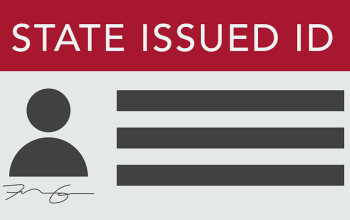Understanding a Vehicle Identification Number (VIN) provides access to a car's comprehensive history, from its manufacturer to past accidents and outstanding safety recalls. ISO 3779 standards standardize VIN decoding globally, empowering buyers to make informed decisions by revealing crucial details like model year and production facility. Regular VIN checks are responsible practices that ensure vehicle safety, save costs, and offer peace of mind. Standardization revolutionizes VIN interpretation, simplifying cross-border transactions and historical checks, ultimately benefiting buyers worldwide.
A Vehicle Identification Number (VIN) serves as a unique fingerprint for every car, offering far more than meets the eye. Decoding this powerful code allows you to explore a vehicle’s history, from its inception by specific manufacturers to its potential involvement in safety recalls. This comprehensive guide delves into the intricate details embedded within each digit of a VIN, empowering buyers with knowledge and peace of mind when navigating the global car market. By understanding these standards, especially with the advent of ISO 3779, you can ensure that your next vehicle purchase is both safe and reliable.
- Decoding VIN: Unlocking Vehicle History
- Essential Details in Each Digit
- Global Standards for VIN Interpretation
- Safety Recalls and VIN Checks
- Preventing Post-Purchase Surprises
- The Role of ISO 3779 Standards
- Ensuring Trustworthy Used Car Purchases
Decoding VIN: Unlocking Vehicle History

Decoding a Vehicle Identification Number (VIN) is like unlocking a secret vault of vehicle history. Each digit and character holds specific meaning, providing insights into who built the car, when, and under what conditions. Manufacturers have been using VINs for decades to track each vehicle’s journey from production line to owner. Today, these numbers are more valuable than ever due to the increased complexity of global automotive markets and stringent safety regulations.
With ISO 3779 standards, decoding has become a precise science. The first few digits represent the manufacturer, while subsequent characters indicate the model year, production plant, and other important details. By scanning or entering a VIN into specialized databases, owners can access critical information such as maintenance records, accident history, and outstanding safety recalls. This proactive approach ensures that buyers are fully informed about their vehicle’s past, enabling them to make confident decisions and potentially avoid costly surprises.
Essential Details in Each Digit

Each digit in a VIN holds significance and provides critical information about the vehicle’s history and specifications. The first three characters represent the manufacturer, identifying the company responsible for producing the car. The following two or three digits denote the model year, making it easy to pinpoint when the vehicle was assembled. The next few digits are unique to each individual car, ensuring no two vehicles have the same identification code. This section also includes information about the production plant and specific equipment used during manufacturing. Additionally, certain VINs may reveal details about optional features, such as engine type, transmission, and color choices, offering a comprehensive overview of the vehicle’s build.
Global Standards for VIN Interpretation

The global automotive industry has embraced ISO 3779, a standard designed to streamline Vehicle Identification Number (VIN) interpretation worldwide. This international agreement ensures that every VIN carries consistent and standardized data across borders. For car buyers, this means that when you check a VIN number, you’ll gain access to the same crucial information no matter where in the world the vehicle is registered or manufactured.
This standardization has simplified the process of researching vehicle history, particularly for those purchasing cars from other countries. By accessing global databases and comparing VINs, consumers can now verify safety recalls, service histories, and ownership details with greater ease. This transparency empowers buyers to make informed decisions and helps ensure that they’re not left with unexpected maintenance costs or hidden issues down the line.
Safety Recalls and VIN Checks

Safety recalls are a critical aspect of vehicle ownership, as they address potential issues with car components that could impact driver safety. These recalls often involve fixing or replacing parts like brakes, airbags, or steering systems. A VIN check plays a pivotal role in ensuring you’re aware of any such recalls related to your vehicle. By running a simple lookup using the unique 17-character VIN, you can access a wealth of information, including recall notifications specific to your car’s make, model, and production year. This proactive measure allows owners to take necessary actions promptly, keeping themselves and their passengers safe on the road.
Regular VIN checks are an essential part of responsible vehicle ownership. They offer peace of mind by providing transparency about a car’s history, including any maintenance or safety-related updates. In today’s interconnected world, where vehicles can change hands multiple times, it’s crucial to verify that all recall issues have been addressed. This simple step can save time, money, and most importantly, prevent potential accidents or injuries caused by faulty parts.
Preventing Post-Purchase Surprises

When purchasing a vehicle, whether new or used, one of the best ways to protect yourself from post-purchase surprises is by checking the Vehicle Identification Number (VIN). A VIN is like an fingerprint for a car, unique and specific to each vehicle. It contains crucial information that can be decoded to reveal details about the manufacturer, model year, production facility, and more significantly, any outstanding safety recalls or issues reported by the vehicle’s original owner.
By running a simple VIN check, you can gain access to a vehicle’s entire history, including maintenance records, accident reports, and—most importantly—any unaddressed safety concerns. This proactive step ensures that you’re not left with unexpected repairs or hidden dangers once the car is under your ownership, allowing you to make informed decisions and ensuring peace of mind on the road.
The Role of ISO 3779 Standards

The ISO 3779 standards play a pivotal role in modernizing how we decode and interpret Vehicle Identification Numbers (VINs). These globally recognized standards ensure that every VIN is structured consistently, making it easier for buyers, mechanics, and researchers to access critical information. By establishing a uniform format, the ISO 3779 specifications streamline the process of identifying manufacturers, model years, and specific vehicle attributes.
This standardization is particularly beneficial for those navigating the global car market, where vehicles can cross borders with varying regulations. It simplifies the task of checking a vehicle’s history, including safety recalls, as the VIN alone becomes a powerful tool for verification. Buyers can now quickly access detailed information about a car’s past, ensuring they make informed choices and potentially avoiding costly surprises.
Ensuring Trustworthy Used Car Purchases

When considering a used car purchase, transparency is key to ensuring a trustworthy deal. One of the best ways to achieve this is by examining the Vehicle Identification Number (VIN). A VIN provides a unique code that serves as a digital fingerprint for any vehicle, offering valuable insights into its history and potential issues. Through standardized coding systems like ISO 3779, accessing and interpreting these codes has become simpler for buyers worldwide. By simply checking the VIN, you can uncover crucial information about the manufacturer, model year, production location, and even safety recall status. This proactive approach allows car buyers to make informed decisions, avoiding potential pitfalls associated with hidden defects or outstanding recalls that could significantly impact both safety and resale value.
A Vehicle Identification Number (VIN) acts as a powerful tool, offering insights into a vehicle’s history and safety critical. By understanding how to read and interpret VINs, buyers can navigate the global car market with confidence, ensuring they make informed decisions and avoid potential post-purchase surprises. The evolution of ISO 3779 standards has simplified this process, making it easier than ever to access essential details about a vehicle’s past, from recalls to manufacturing information.



